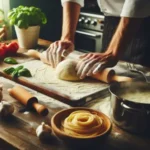There is something undeniably comforting about a plate of homemade pasta—its rich texture and fresh flavors can transform an ordinary meal into an extraordinary experience.
In a world where convenience often takes precedence, the artistry of crafting your own pasta can seem daunting, yet the rewards are immeasurable. Whether you’re twirling spaghetti around your fork or savoring the delicate folds of ravioli, mastering the art of pasta-making opens up a world of culinary creativity. In this blog post, we will share top tips that will guide you through the process of making delicious homemade pasta from scratch. From choosing the right ingredients and mastering the dough to perfecting cooking techniques and exploring inventive sauces, join us on this flavorful journey to elevate your pasta game and impress your family and friends with mouthwatering dishes that celebrate the timeless tradition of Italian cuisine.
1. Introduction to Homemade Pasta
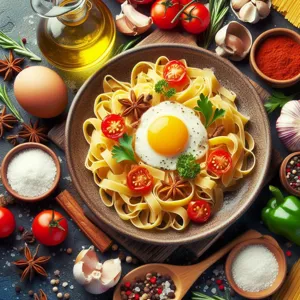
When it comes to Italian cuisine, few things evoke the same joy and satisfaction as a plate of homemade pasta. The very act of creating your own pasta from scratch transforms a simple meal into a labor of love, bringing the kitchen to life with the comforting aroma of flour and eggs blending together. Homemade pasta is not only a testament to culinary skill but also a delightful experience that allows you to connect with your food in a way that store-bought options simply cannot match.
The beauty of homemade pasta lies in its versatility. Whether you prefer the delicate strands of fettuccine, the pillowy softness of gnocchi, or the rustic charm of pappardelle, the possibilities are endless. With just a handful of basic ingredients—flour, eggs, and a pinch of salt—you can embark on a culinary adventure that will elevate your dishes and impress your family and friends.
Moreover, making pasta at home offers an opportunity to customize flavors and textures to suit your taste. Want to infuse your dough with vibrant spinach or rich beetroot? Go for it! Craving a hint of nuttiness? Try substituting some of the all-purpose flour with semolina. The process of kneading the dough, rolling it out, and cutting it into your desired shape can be incredibly therapeutic, allowing you to unleash your creativity in the kitchen.
In this guide, we will explore the essential techniques, tips, and tricks for mastering homemade pasta. From the foundational skills of mixing and kneading to the art of shaping and cooking, we will equip you with everything you need to create delectable pasta dishes that will leave your taste buds dancing. So, roll up your sleeves, dust off your countertop, and get ready to dive into the wonderful world of homemade pasta!
2. Essential Ingredients for Perfect Pasta
When it comes to mastering the art of homemade pasta, the quality of your ingredients can make all the difference. While the recipe may seem simple, the right components elevate your dish from ordinary to exceptional. Here are the essential ingredients you need to create perfect pasta every time:
**1. Flour:** The cornerstone of any pasta dish, flour plays a crucial role in determining the texture and flavor of your noodles. For traditional Italian pasta, “00” flour is often preferred due to its fine grind and high protein content, which yields a silky, elastic dough. However, semolina flour can also be used for a firmer bite, particularly in shapes like gnocchi or orecchiette. Experimenting with a blend of these flours can lead to a pasta that’s uniquely yours.
**2. Eggs:** Fresh eggs are another key ingredient, especially for rich, egg-based pasta like tagliatelle or fettuccine. The yolks lend a beautiful golden hue and enhance the pasta’s flavor, while the whites help bind the dough. If you’re looking for a vegan alternative, you can substitute eggs with water and a touch of olive oil, although the texture will differ slightly.
**3. Salt:** It may seem like a minor addition, but salt is essential for enhancing the flavor of your pasta. When making the dough, a pinch of salt will bring out the natural flavors of the ingredients. Additionally, don’t forget to season your cooking water generously before adding the pasta—it should taste like the sea. This ensures that every bite is seasoned to perfection.
**4. Water:** The binding agent in your pasta dough, the water should be added gradually to achieve the right consistency. Use room temperature water for a smoother dough, and adjust the amount based on the humidity and flour type. Remember, it’s easier to add a little more water than to fix a too-wet dough!
**5. Olive Oil:** While not always necessary, a drizzle of high-quality extra virgin olive oil can lend richness to your dough and prevent it from becoming too sticky. It also adds a lovely flavor that complements many pasta dishes.
By focusing on these essential ingredients, you’ll set a solid foundation for your homemade pasta-making journey. Remember, the beauty of pasta lies in its simplicity, so choose the best ingredients you can find and treat them with care. With practice and passion, your homemade pasta will become the star of your dining table.
3. Choosing the Right Flour: Semolina vs. All-Purpose
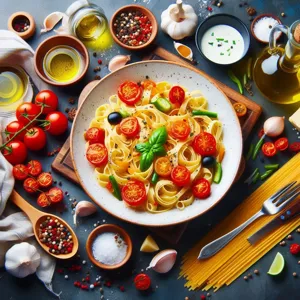
When it comes to crafting the perfect pasta from scratch, the choice of flour can make all the difference. Two of the most common options are semolina flour and all-purpose flour, each bringing its own unique qualities to the table. Understanding these differences is key to mastering your homemade pasta.
**Semolina Flour** is a coarser flour made from durum wheat, and it’s the traditional choice for pasta-making. Its high protein content and robust gluten structure give pasta a firm texture that holds up beautifully during cooking. When you use semolina, your pasta will have a slightly yellow hue and a delightful bite, making it perfect for dishes like lasagna, fettuccine, or gnocchi. Additionally, the grainy texture of semolina helps absorb sauces better, resulting in a more flavorful dish.
On the other hand, **All-Purpose Flour** is a versatile staple in most kitchens, suitable for a variety of baking tasks, including pasta. While it lacks the same high protein levels as semolina, all-purpose flour can still yield tender pasta with a softer mouthfeel. This type of flour is ideal for lighter pasta dishes, such as delicate ravioli or thinner sheets for lasagna, where a softer texture is desired.
When deciding which flour to use, consider the type of pasta you want to create and the desired texture. For a more traditional, hearty pasta that stands up to rich sauces, semolina is your best bet. If you’re looking for something lighter or are working with a specific recipe, all-purpose flour can serve you well.
In the quest for the perfect pasta, don’t shy away from experimenting. You might even find that a blend of both flours offers the ideal balance, providing a unique texture and flavor profile that elevates your homemade dishes to new heights. With the right flour in your pantry, you’re well on your way to mastering the art of pasta-making!
4. The Importance of Fresh Eggs in Pasta Making
When it comes to making homemade pasta, the quality of your ingredients can make all the difference, and none are more crucial than fresh eggs. Using fresh eggs in your pasta dough not only enhances the flavor but also significantly improves the texture and color of your final product. The vibrant, golden yolks contribute a richness that elevates your pasta to restaurant-quality levels, creating a beautiful hue that can turn even the simplest dish into a feast for the eyes.
Fresh eggs contain a higher moisture content, which means they integrate seamlessly into the flour, resulting in a silky, pliable dough that’s easy to work with. This elasticity is key for achieving that perfect bite, allowing your pasta to hold its shape while cooking and providing a delightful chewiness that dried pasta simply can’t replicate. Additionally, the proteins in fresh eggs help to create a sturdy structure, giving your pasta the resilience it needs to hold up under sauces or when baked in dishes like lasagna.
Moreover, the nutritional benefits of fresh eggs cannot be overlooked. Packed with protein, vitamins, and minerals, they make your homemade pasta not only more flavorful but also more nourishing. When you crack open a fresh egg, you’ll notice the vibrant color and firm texture of the yolk, indicators of the quality and freshness that will translate directly into your pasta.
To truly embrace the art of pasta making, consider sourcing your eggs from local farms or farmers’ markets. Not only will you support local agriculture, but you’ll also be rewarded with eggs that are often fresher and richer in flavor than those found in grocery stores. In the realm of pasta making, embracing fresh eggs is not just a tip; it’s a game-changer that can transform your culinary creations into something truly special. So, the next time you roll up your sleeves to make pasta, remember: fresh eggs are your best friend in the kitchen!
5. Step-by-Step Guide to Making Fresh Pasta Dough
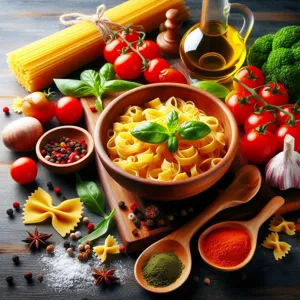
Making fresh pasta dough at home can be a rewarding experience, and with the right technique, it’s easier than you might think! Here’s a step-by-step guide to help you create the perfect pasta dough that will elevate your homemade dishes to a whole new level.
**Step 1: Gather Your Ingredients**
start with high-quality ingredients for the best results. You’ll need 2 cups of all-purpose flour (or semolina flour for a firmer texture), 3 large eggs, a pinch of salt, and a drizzle of olive oil for added richness. You can use a clean countertop or a large mixing bowl as your workspace.
**Step 2: Create a Flour Well**
Pour the flour onto your countertop or into your bowl and form it into a mound. Make a deep well in the center, ensuring the walls are thick enough to hold the eggs without spilling. This is where the magic begins!
**Step 3: Add the Eggs and Salt**
Crack the eggs into the well and sprinkle a pinch of salt over them. If you’re using olive oil, drizzle a small amount in as well. Using a fork, gently beat the eggs, gradually incorporating the flour from the edges of the well. Be patient, as this will take a little time!
**Step 4: Knead the Dough**
Once the mixture starts coming together, use your hands to form it into a rough ball. Transfer the dough to a lightly floured surface and begin kneading. Press down and fold the dough over itself with the heel of your hand, turning it a quarter turn after each fold. Knead for about 8-10 minutes until the dough is smooth and elastic. If it’s too sticky, sprinkle a little more flour as needed.
**Step 5: Rest the Dough**
Wrap your dough ball in plastic wrap or place it in a bowl covered with a damp cloth. Let it rest for at least 30 minutes at room temperature. This resting period is crucial as it allows the gluten to relax, making the dough easier to roll out.
**Step 6: Roll Out Your Dough**
After resting, divide the dough into manageable pieces. Using a rolling pin or a pasta machine, roll out each piece to your desired thickness. Dust with flour to prevent sticking and ensure a smooth surface.
**Step 7: Cut and Shape**
Now comes the fun part! Depending on your pasta preference, you can cut your sheets into tagliatelle, fettuccine, or even lasagna sheets. For stuffed pasta like ravioli or tortellini, use a round cutter to create circles, fill them with your favorite fillings, and seal the edges tightly.
**Final Touch: Cooking Your Fresh Pasta**
Bring a large pot of salted water to a rolling boil. Fresh pasta cooks quickly, usually in just 2-4 minutes, so keep an eye on it. Once it floats to the surface, it’s ready! Pair your fresh pasta with a delicious sauce, and watch as your homemade dish wows family and friends.
With these simple steps, making fresh pasta dough at home is an enjoyable process that yields delicious results. Embrace the art of pasta-making, and you’ll find yourself creating mouthwatering dishes that are sure to impress!
6. Rolling Techniques: Hand-Rolled vs. Pasta Machine
When it comes to crafting the perfect pasta, the rolling technique you choose can significantly impact the texture and quality of your final dish. Both hand-rolling and using a pasta machine have their unique advantages, and understanding these can help you decide which method suits your culinary style best.
**Hand-Rolled Pasta**
Hand-rolling pasta is an age-old technique that connects you with the traditions of Italian cooking. It requires a bit more effort and practice, but the rewards are well worth it. When you roll out the dough by hand, you have greater control over its thickness and consistency. Using a simple rolling pin, you can achieve a rustic, artisanal feel that many chefs and home cooks cherish.
The tactile experience of kneading the dough, feeling its texture, and rolling it out with your own hands can be immensely satisfying. Plus, hand-rolled pasta tends to have slight irregularities that can add charm and character to your dishes. It’s perfect for those who love to embrace the craft of cooking and appreciate the subtle nuances that come with it.
**Pasta Machine**
On the other hand, a pasta machine can be a real game changer for those looking for speed and precision. With adjustable rollers, you can achieve uniform thickness with minimal effort, which is particularly beneficial when making delicate pasta types like lasagna sheets or ravioli. A pasta machine also reduces the physical exertion involved, making it easier for anyone to produce consistent results.
Using a machine can also save time, especially when preparing large batches of pasta. The efficient rolling process allows you to focus on other aspects of your meal, such as preparing sauces or filling. Additionally, many pasta machines come equipped with various attachments, enabling you to create an array of pasta shapes, from fettuccine to tagliatelle, with ease.
Ultimately, the choice between hand-rolling and using a pasta machine boils down to personal preference. If you relish the hands-on experience and authenticity of traditional methods, hand-rolling may be your go-to. However, if convenience and speed are your priorities, a pasta machine can help you whip up delicious homemade pasta in no time. Regardless of your choice, both methods can lead to mouthwatering results that are sure to impress family and friends alike.
7. Shaping Your Pasta: Fettuccine, Ravioli, and More
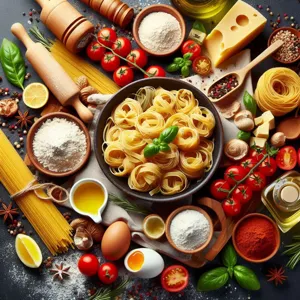
Shaping your pasta is where the magic truly happens, transforming simple dough into an array of delightful forms that can elevate your homemade dishes from ordinary to extraordinary. The process can be both an art and a science, allowing you to experiment with various shapes and sizes to find what resonates best with your palate.
**Fettuccine** is a classic choice, perfect for capturing rich sauces. To create this beloved flat noodle, roll out your pasta dough into a thin sheet using a pasta machine or a rolling pin. Once you’ve achieved a uniform thickness, dust the surface with a little flour to prevent sticking, and gently fold the sheet over itself a few times. With a sharp knife or a pizza cutter, slice the dough into strips about 1/4 inch wide. Unravel the strands and hang them on a pasta drying rack or lay them flat, ensuring they don’t stick together. The result? Perfectly formed fettuccine that’s ready to pair with creamy Alfredo or vibrant marinara.
If you’re feeling adventurous, try your hand at **ravioli**. This stuffed pasta is a canvas for your culinary creativity. Start by rolling out two sheets of pasta dough, ensuring they’re thin enough for delicate bites but sturdy enough to hold fillings. Use a cookie cutter or a glass to cut out circles or squares from one sheet. Place a spoonful of your desired filling—be it ricotta and spinach, mushroom duxelles, or a savory meat mixture—onto the center of each shape. Moisten the edges with water, then carefully place the second sheet on top and press around the filling to seal. Don’t forget to crimp the edges with a fork for an elegant touch!
Other shapes to explore include **farfalle**, often referred to as “bow-tie” pasta, which can be created by cutting the rolled dough into rectangles, pinching the center to form the iconic shape. Or consider **gnocchi**, which involves rolling small pieces of dough into logs and cutting them into bite-sized pillows before gently indenting them with a fork for that classic texture.
As you experiment with these shapes, remember that the key to success lies in practice and patience. Each pasta form has its unique allure and culinary purpose, and mastering them will not only enhance your dishes but also deepen your appreciation for this timeless craft. So, roll up your sleeves, gather your ingredients, and let your creativity flow—delicious homemade pasta is just a shape away!
8. Cooking Pasta: Tips for the Perfect Al Dente Texture
Achieving the perfect al dente texture is one of the hallmarks of mastering pasta, elevating your homemade dishes from good to extraordinary. Al dente, meaning “to the tooth” in Italian, describes pasta that is cooked to be firm yet tender, providing a delightful bite that complements sauces beautifully. Here are some essential tips to ensure your pasta reaches that ideal state.
First and foremost, the choice of pasta is crucial. Fresh pasta cooks more quickly than dried varieties, so be mindful of the cooking times provided on the package. Regardless of the type, always refer to the recommended cooking time, but remember to start testing a minute or two early. This proactive approach allows you to catch your pasta right at the moment it transitions from firm to perfectly al dente.
Next, the pot of water is your pasta’s first home, and it deserves your attention. Fill a large pot with plenty of water—at least four to six quarts for every pound of pasta—and bring it to a rolling boil. The abundance of water helps prevent the pasta from sticking together and ensures even cooking. Don’t forget to season the water generously with salt; it should taste like the sea. This is your opportunity to infuse flavor right into the pasta itself.
When the water is boiling vigorously, add the pasta and give it a gentle stir to keep it from clumping. As the pasta cooks, taste it periodically, starting about two minutes before the package’s suggested cooking time. A perfectly cooked piece should feel firm when bitten but should also yield slightly under pressure. For a more precise approach, you can use a kitchen timer to keep track of your cooking time, but ultimately, your taste buds are your best guide.
Once your pasta reaches that ideal al dente texture, it’s time to drain, but don’t rinse! Rinsing washes away the starch that helps sauces adhere to the noodles. Instead, reserve a cup of the starchy pasta water before draining; this liquid can be a game-changer for adjusting the consistency of your sauce.
Finally, toss the drained pasta with your sauce immediately in a hot pan. This technique allows the pasta to absorb the flavors of the sauce while maintaining that desired bite. If the sauce is too thick, add a splash of the reserved pasta water to achieve your perfect consistency.
By following these tips, not only will you master the art of cooking pasta, but you’ll also impress your family and friends with dishes that boast the delightful texture and authentic flavor of Italian cuisine. With practice, you’ll find it second nature to achieve that perfect al dente bite every time. Happy cooking!
9. Flavoring Your Pasta: Infusions and Additives
When it comes to elevating your homemade pasta, flavoring is the secret ingredient that can transform a simple dish into a culinary masterpiece. Infusions and additives are your best friends in this endeavor, allowing you to play with taste, aroma, and even color to create a dining experience that excites the palate.
**Infusions** are a delightful way to introduce new flavors directly into your pasta dough. One of the simplest methods is to infuse your water with ingredients like garlic, herbs, or even vegetables. For instance, boiling your pasta in water infused with fresh basil or rosemary can impart a subtle, aromatic quality that pairs beautifully with a light olive oil or cream sauce. You can even experiment with vegetable juices, such as beet or spinach, to create vibrant-colored pasta that tastes as good as it looks.
**Additives** offer another layer of flavor that can be incorporated directly into the dough. Consider adding a splash of olive oil or a pinch of sea salt to your pasta mixture for a richer taste. For those looking to spice things up, a dash of crushed red pepper flakes or a sprinkle of grated Parmesan cheese can add depth and complexity. If you’re feeling adventurous, try mixing in pureed sun-dried tomatoes or roasted garlic for a burst of flavor that will make your pasta stand out.
Don’t forget about the finishing touches! Tossing your freshly cooked pasta with a drizzle of flavored oil—like garlic-infused or chili oil—can enhance the dish’s overall taste. Alternatively, tossing in fresh herbs just before serving can add a bright, fresh note that elevates the entire meal.
By exploring the world of infusions and additives, you can master the art of flavoring your pasta, ensuring that every bite is a delicious revelation. Whether you’re aiming for a classic Italian dish or something uniquely your own, the possibilities are endless, and your taste buds are sure to thank you!
10. Sauces that Elevate Your Homemade Pasta
When it comes to homemade pasta, the sauce is where the magic truly happens. A well-crafted sauce can elevate a simple dish into a culinary masterpiece, offering layers of flavor that dance harmoniously with your freshly made noodles. The beauty of pasta lies in its versatility, and the right sauce can transform it into a hearty meal, a light refreshment, or an indulgent treat.
Start with the classics: a rich marinara bursting with the freshness of ripe tomatoes, garlic, and a hint of basil can make your spaghetti sing. For something creamier, consider a luscious Alfredo sauce, made from butter, heavy cream, and Parmesan cheese, which clings beautifully to fettuccine and offers a satisfyingly decadent experience. If you’re looking to impress, a homemade pesto is a fantastic choice. With its vibrant green hue and aromatic blend of basil, garlic, pine nuts, and olive oil, this sauce not only tastes divine but also adds a pop of color to your plate.
Don’t shy away from experimenting with the unexpected, either. A tangy lemon and caper sauce can brighten up a dish of linguine, while a robust ragù, simmered slowly with tender meats and aromatic vegetables, brings warmth and heartiness to your table. For those craving a touch of elegance, a saffron-infused sauce can provide a luxurious twist, lending a unique flavor profile that complements delicate pasta shapes like tagliatelle or pappardelle.
Remember, the key to a great sauce is balance. Ensure that it harmonizes with the pasta’s texture and flavor without overpowering it. For instance, lighter sauces pair beautifully with thinner noodles, while heartier sauces can stand up to thicker, more substantial shapes. By paying attention to these details and selecting high-quality ingredients, you can create sauces that not only enhance your homemade pasta dishes but also leave a lasting impression on your diners. So, roll up your sleeves, gather your ingredients, and let your creativity flow as you master the art of pasta sauces!
11. Pairing Pasta with the Right Ingredients
Pairing pasta with the right ingredients is an essential skill that can elevate your homemade dishes from simple to spectacular. The beauty of pasta lies not only in its variety but also in its versatility; it can be a canvas for an array of flavors, textures, and aromas. Understanding how to match pasta shapes with complementary ingredients is the key to achieving a harmonious dish that delights the palate.
Start by considering the shape and texture of your pasta. For instance, delicate angel hair or thin spaghetti pairs beautifully with light, oil-based sauces or fresh herb-infused dressings, allowing the subtle flavors to shine through without overwhelming the dish. On the other hand, robust shapes like penne or rigatoni can hold up to heartier sauces, such as rich meat ragu or creamy Alfredo, their ridges and hollows capturing every bit of flavor.
Don’t overlook the importance of seasonal ingredients. Fresh vegetables, herbs, and proteins can make a significant difference in the overall taste of your pasta dish. In the summer, toss your pasta with fresh cherry tomatoes, basil, and a drizzle of olive oil for a refreshing take. In the colder months, consider hearty root vegetables and winter greens, sautéed with garlic and tossed with your pasta for a comforting meal.
Additionally, consider the balance of flavors. A sprinkle of salty cheese, like Pecorino Romano or Parmesan, can add depth to a dish, while a touch of acidity from lemon juice or a vinegar-based dressing can brighten up rich sauces. Experiment with different textures, too—adding crunchy elements like toasted nuts or crispy breadcrumbs can create a delightful contrast that keeps each bite interesting.
Ultimately, the magic of pasta lies in its ability to adapt and shine with the right pairings. By thoughtfully selecting your ingredients, you can create pasta dishes that not only satisfy but also leave a lasting impression on your family and friends, making every meal a celebration of flavor and creativity.
12. Storing and Freezing Homemade Pasta
Storing and freezing homemade pasta is an essential skill that can help you make the most of your culinary creations, ensuring you have fresh, delicious pasta ready to cook whenever the craving strikes. After investing time and effort into crafting your pasta from scratch, it’s vital to know how to preserve that flavor and texture for later enjoyment.
Once your pasta is made, whether it’s delicate fettuccine, hearty lasagna sheets, or whimsical farfalle, you’ll want to ensure it’s dried properly before storage. Lay the pasta strands in a single layer on a floured surface or a drying rack, allowing them to air dry for about 30 minutes. This step helps prevent the noodles from sticking together and preserves their integrity when stored.
For short-term storage, fresh pasta can be placed in an airtight container and kept in the refrigerator for up to two days. Be sure to sprinkle a bit of flour between layers to keep them from clumping. Alternatively, if you want to stock up for future meals, freezing is the way to go.
To freeze your pasta, first, let it dry slightly, as mentioned earlier, then arrange it in a single layer on a baking sheet and place it in the freezer for about 30 minutes. This method, known as flash freezing, prevents the pasta from sticking together in one big lump. Once frozen, transfer the pasta to a resealable freezer bag, removing as much air as possible to prevent freezer burn. Label the bag with the date, and enjoy your homemade pasta for up to three months!
When you’re ready to cook your frozen pasta, there’s no need to thaw it beforehand. Simply bring a pot of salted water to a rolling boil and drop the frozen pasta directly into the pot. Cook for a minute or two longer than you would fresh pasta, and you’ll have a delightful meal ready in no time.
With proper storage and freezing techniques, you can enjoy the fruits of your labor long after the dough has been rolled and cut, making homemade pasta an even more rewarding endeavor.
13. Common Mistakes to Avoid in Pasta Making
When it comes to mastering the art of pasta making, avoiding common pitfalls can mean the difference between a mediocre dish and a culinary masterpiece. Here are some frequent mistakes that home cooks often make, along with tips on how to steer clear of them.
Firstly, many novice pasta makers underestimate the importance of using the right flour. While all-purpose flour is handy, opting for a high-quality semolina or ’00’ flour can significantly enhance the texture and flavor of your dough. These flours contain a higher protein content, which contributes to a firmer structure and allows for better absorption of sauces.
Another common error is neglecting to measure ingredients accurately. Pasta making is as much a science as it is an art; a slight imbalance in flour to liquid ratio can lead to a dough that is either too dry and crumbly or too sticky and unmanageable. Always weigh your ingredients for the best results and consider adjusting based on environmental factors like humidity.
Additionally, many enthusiasts make the mistake of rushing the resting phase. After kneading, it’s crucial to let your dough rest, allowing the gluten to relax. This resting period results in a more pliable dough that’s easier to roll out. Skipping this step can lead to pasta that tears easily or doesn’t hold its shape when cooked.
Another pitfall lies in cooking the pasta. Overcooking is a common issue; remember that fresh pasta cooks much faster than dried varieties. Keep an eye on it as it boils, and taste a strand a minute or two before the recommended cooking time to achieve that perfect al dente texture.
Lastly, don’t forget to generously salt your pasta water. This is your opportunity to infuse flavor directly into the pasta itself, making a noticeable difference in the final dish. A common rule of thumb is to use enough salt that the water tastes like the sea.
By being mindful of these common mistakes, you can elevate your pasta-making skills and create delicious, homemade dishes that will impress family and friends alike. Embrace the learning process, take your time, and soon you’ll be crafting pasta that rivals that of the finest Italian trattorias.
14. Exploring Regional Pasta Dishes from Italy
Italy, a country renowned for its rich culinary heritage, boasts a stunning array of regional pasta dishes that reflect the diverse landscapes, climates, and traditions of its various provinces. Each region has its own unique take on pasta, utilizing local ingredients and time-honored techniques, making the exploration of these dishes not just a feast for the palate but also a journey through the heart of Italian culture.
In the northern regions, such as Lombardy and Piedmont, you’ll find creamy, buttery sauces that pair beautifully with stuffed pastas like ravioli and tortellini. The exquisite *Tortellini in Brodo*, for example, features delicate meat-filled pasta served in a savory broth, a comforting dish that warms both body and soul during the cooler months.
Travel south to Emilia-Romagna, the birthplace of some of Italy’s most beloved pasta, including *Tagliatelle al Ragù* (better known as Bolognese). Here, the rich, slow-cooked meat sauce clings to the long, flat noodles, creating a hearty meal that speaks to the region’s tradition of culinary excellence. The use of fresh eggs in the pasta dough adds a luxurious touch that elevates this dish to the next level.
In contrast, the coastal regions like Campania and Sicily bring a burst of vibrancy with their seafood pastas. Dishes like *Spaghetti alle Vongole* (spaghetti with clams) showcase the simplicity and freshness of local ingredients, allowing the flavors of the sea to shine through. With a drizzle of olive oil, a sprinkle of parsley, and a hint of garlic, this dish captures the essence of coastal living.
Don’t overlook the southern regions, where you’ll find bold flavors and hearty ingredients. In Calabria, for instance, the famed *Fileja* pasta is often served with spicy ‘nduja sausage, a spreadable salami that adds depth and heat to the dish. The combination of robust flavors and artisanal pasta showcases the region’s passion for cooking.
As you embark on your journey to master homemade pasta, take the time to explore these regional dishes. Not only will you expand your culinary repertoire, but you’ll also gain an appreciation for the rich traditions that have shaped Italian cuisine over centuries. By incorporating these authentic flavors and techniques into your cooking, you’ll bring a taste of Italy to your table, along with the warmth and joy that comes from sharing beloved family recipes. So grab your apron and get ready to savor the delightful world of regional Italian pasta!
15. Conclusion: The Joy of Sharing Homemade Pasta
In conclusion, the joy of sharing homemade pasta transcends mere nourishment; it is an experience that weaves together moments of laughter, love, and connection. The act of crafting pasta from scratch is not only an artistic endeavor but also a way to cultivate memories with family and friends. As you roll out the dough, cut the fettuccine, or shape the gnocchi, you’re not just preparing a meal; you’re creating a centerpiece for gatherings that invite warmth and togetherness.
Imagine the scene: a beautifully set table adorned with freshly made pasta in vibrant sauces, surrounded by loved ones eagerly sharing stories and savoring each bite. The aroma of garlic and herbs wafts through the air, mingling with the sound of clinking glasses and joyful chatter. Each dish you serve becomes a conversation starter, a testament to your efforts and a celebration of homemade goodness.
Moreover, making pasta from scratch offers a unique opportunity to experiment with flavors and textures, allowing you to tailor your creations to personal tastes and dietary preferences. Whether you’re crafting a rich, creamy Alfredo or a light, herb-infused primavera, the versatility of pasta means there’s something for everyone to enjoy.
So, embrace the artistry of pasta-making and invite others into your kitchen. Share your culinary triumphs, teach your friends the techniques you’ve learned, and pass down family recipes that hold sentimental value. In doing so, you’re not just feeding appetites; you’re nourishing relationships and creating lasting traditions. After all, the best meals are those enjoyed together, and there’s nothing quite like the joy of sharing a plate of homemade pasta with the people who mean the most to you.

